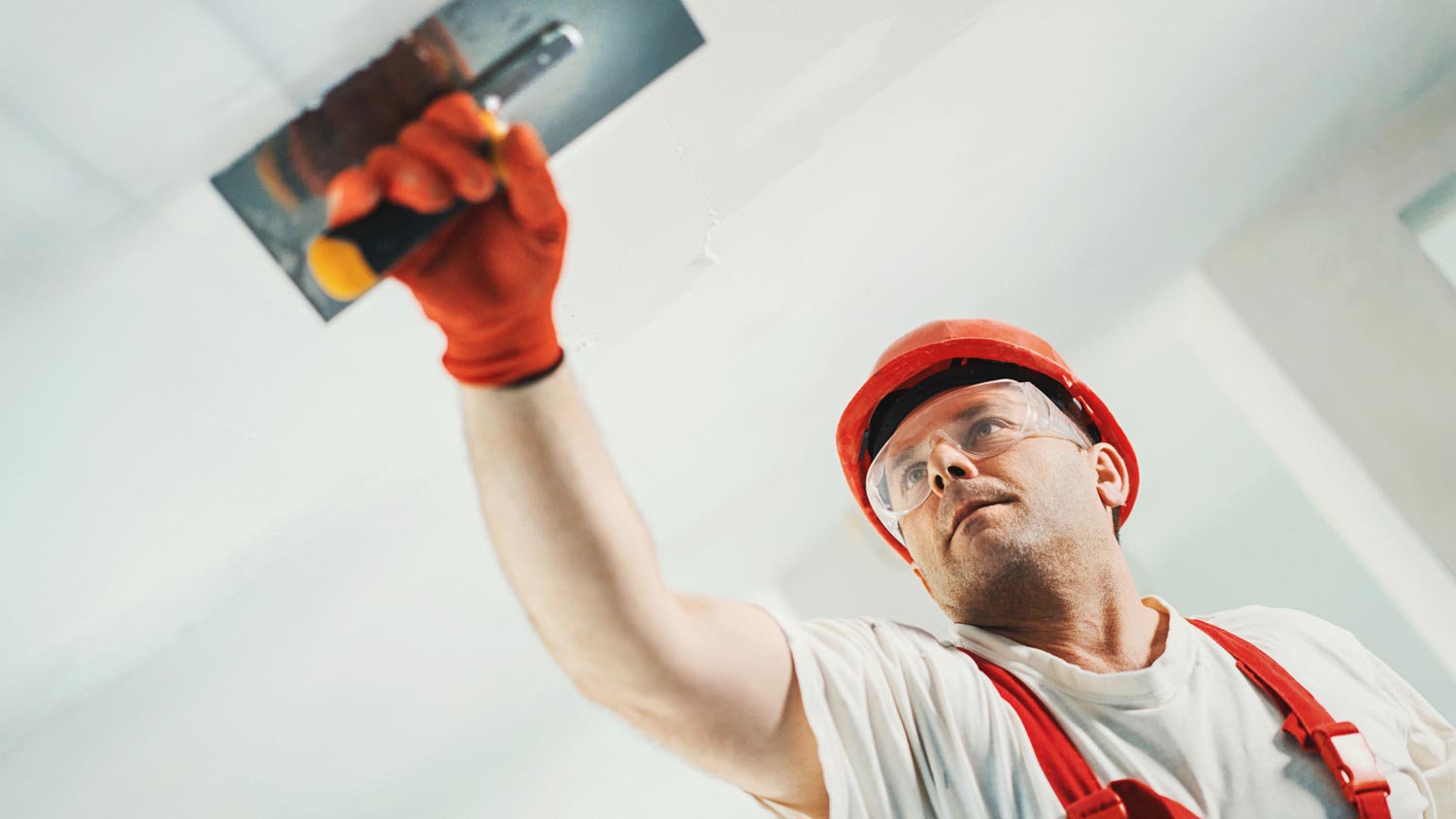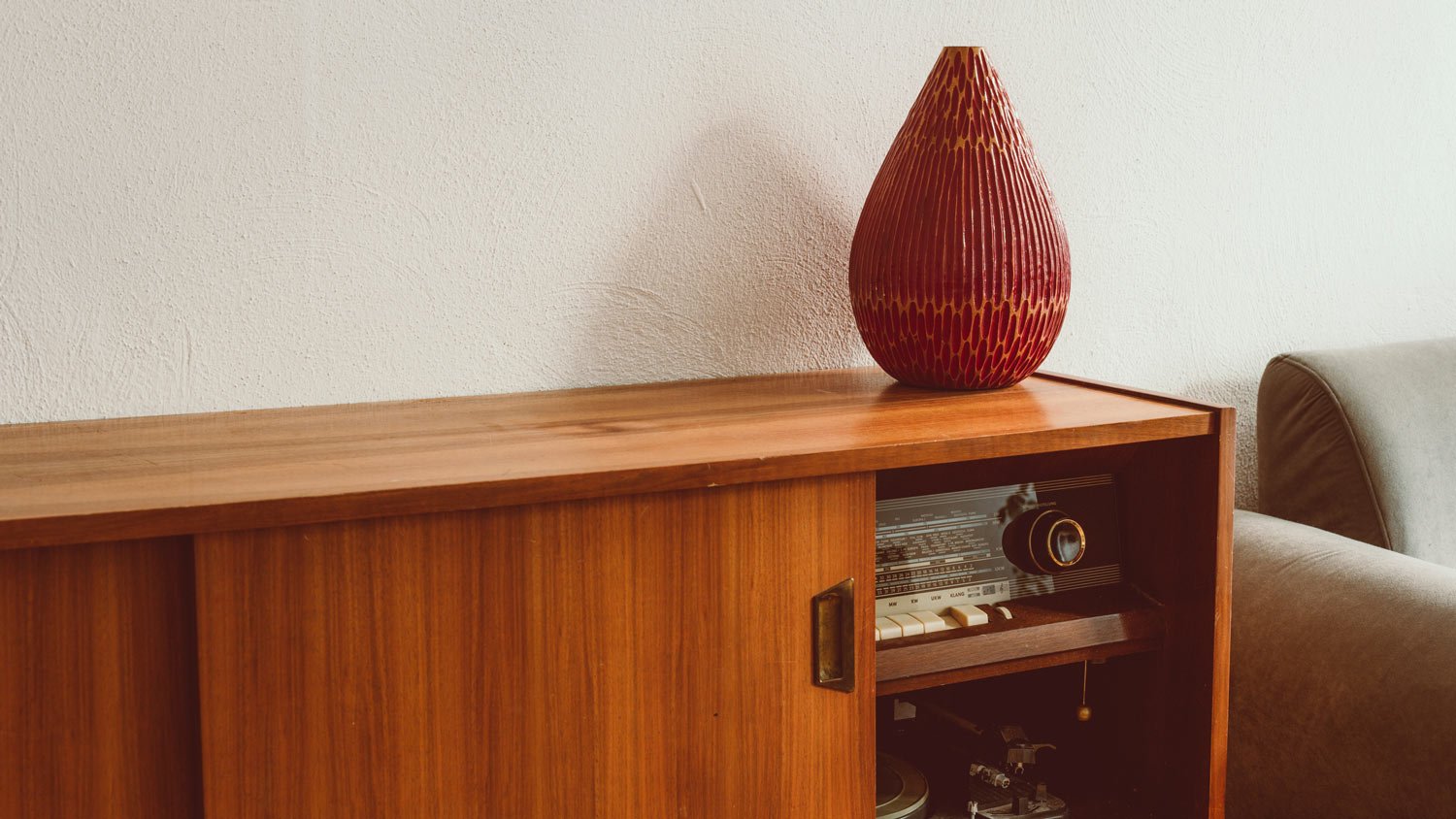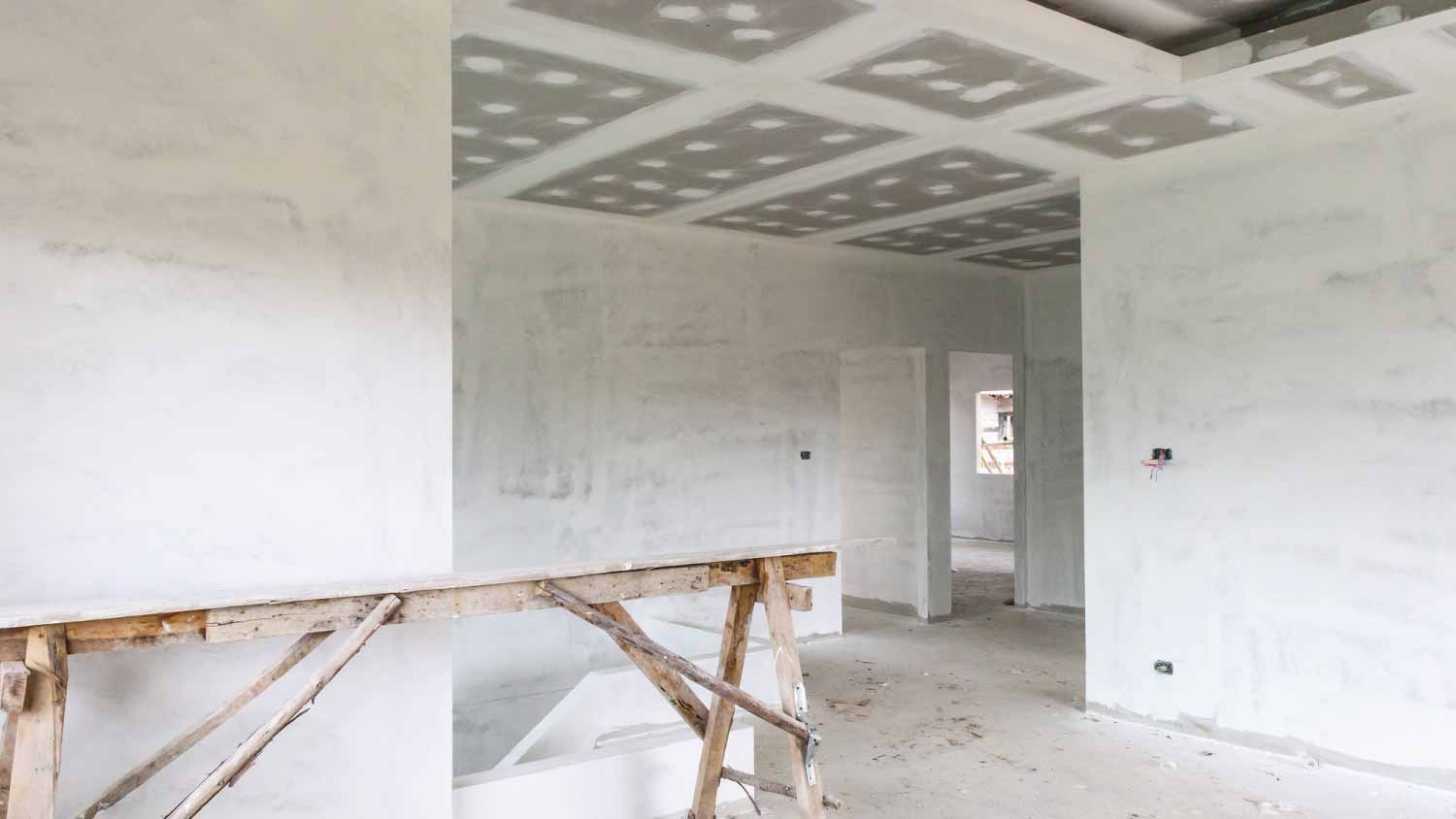
Skim coating drywall is a great alternative to replacement, and is often more affordable. Use this guide to estimate the cost to skim coat walls in your home.
Popcorn makes a great snack, but it’s also a wall design


Texturing your drywall can add a personal, unique touch to any room. Different tools are used to create different types of textures, and there’s a wide variety of techniques to choose from. Here are the different drywall types and textures—and the methods you can use to design them.

Smooth drywall has a classic look that is achieved by applying a thin layer of drywall mud to the entire wall, and smoothing it with a knife as you go. This technique is easy to paint and wallpaper because you’re starting with a smooth finish, but is difficult to get right since it requires a completely even coat of drywall.
Named for its distinctive look, popcorn textured drywall became popular in the 1960s and 1970s, and if you’ve been in homes that were built during this time, you’ve probably seen many popcorn ceilings. You can choose large, medium, or small popcorn texture, and it has the added benefit of sound-dampening properties. This drywall look is applied with a hopper gun, usually using a mix of stucco and Styrofoam.

Another food-inspired technique, orange peel drywall can be done in either fine, medium, or heavy styles. The heavier the style, the larger the pattern appears in the drywall. Orange peel is a spatter texture with a smoother look than popcorn, and it’s a good option if you want to increase the durability of your walls. It’s not the easiest look to achieve, so it may be best to call in a local drywall contractor for the job.
The machine brocade technique is common in modern design and looks like a map. You spray the drywall from either a large hopper or a hand-held machine in random formations to add textural variety. This technique is popular because it’s easy to patch a drywall hole and then cover it with brocade, leaving any dings unnoticeable.

Combing is done with a toothed trowel, and looks like a surface that’s been gone over with a comb. The most popular technique for this look is a half-fan design, where you do a half circle with the trowel, stop, then repeat. However, aside from the combed texture, the design is customizable, so you can let your imagination dictate the look of your room.
The skip trowel drywall texture technique involves applying a thin layer of joint compound to the drywall surface and then using a trowel to create a subtle, irregular pattern with skip marks or small peaks and valleys. This technique adds depth and visual interest to walls, concealing imperfections and creating a textured, rustic appearance. Skip trowel texture can vary in intensity, from light and fine to heavier and more pronounced, depending on the desired aesthetic. When working with a professional, skip trowel texture costs will range between $1.25 and $2.00 per square foot.
Spray sand texture is one of the easiest to do, as it involves just mixing sand with your water and primer, letting it rest overnight, then spraying it on the wall or ceiling with a spray gun. The texture looks like wet sand—kind of like the orange peel look, just a little rougher. It’s another of the more durable choices for your walls or ceilings.
This is another texture that uses sand and is a mixture of the comb technique and the spray sand technique. Sand is mixed with the primer and water, then applied using the combing technique. You can use a medium or thick bristle brush or a wallpaper brush, and apply the mixture in swirling shapes.
The stomp brush technique is also referred to as slap brush, stippled, and crow’s feet. You basically roll a layer of drywall onto your surface, then take a slap brush (a brush with stiff bristles) and slap drywall onto the surface. This might be a messier technique, but you can overlap your slaps, and the end result looks like flower petals.
Lace, sometimes called Spanish lace, gets its name from Spanish lace fans. It resembles a lace fan and is an intricate design. Homeowners like it because you can easily cover cracks and dings with this technique. To get this look, drywall mud is slapped on the wall, or applied with a roller or spray gun, then a knife is used to carve a design in the wall while it’s still wet.
The knockdown technique is actually a combination of spray, stomp, or brushing with a dragging technique. Once you’ve applied your drywall using one of the three methods, you take a tool, like a wallpaper smoother or a putty knife, and create random patterns. There are many different looks you can achieve with this technique, depending on the thickness of your drywall and the method you start with.
A distinctive texturing technique used in interior wall finishing, this style mimics the rough and organic appearance of tree bark, hence its name. This style involves applying drywall mud to the drywall surface and using specialized texturing tools, such as brushes or rollers with irregular patterns, to create a textured surface reminiscent of tree bark. The result is a visually striking and tactile texture that adds a natural and rustic element to interior spaces, making it particularly popular in cabins, lodges, or spaces aiming for a woodland or nature-inspired aesthetic.
Rosebud is akin to the stomp brush technique and will achieve a similar look. However, when you’re applying the drywall, instead of slapping it onto the wall, you slap, then brush in a long stroke so you’re left with a design that looks like long flower petals. In this technique, you shouldn’t overlap as you’re applying the drywall. It’s one of the more difficult types of drywall application to do, but if you can master it, the look is beautiful.
Venetian application is definitely the most difficult on this list, and it takes the longest to master. For the Venetian technique, you mix plaster and marble dust together, then apply it to your surface in multiple thin layers. Once everything is dry, you sand and buff the surface, and the wall looks like an Italian painting. This technique leaves the surface completely smooth but textured looking, which is why it’s more difficult to achieve.
Bas-relief is a decorative wall finishing technique that creates a three-dimensional, sculpted effect on drywall surfaces. This texture is achieved by applying joint compound to the wall and then shaping it with various tools, such as trowels or sculpting knives, to create raised patterns or designs that stand out from the wall's surface. Bas-relief drywall texture can take on various forms, including floral patterns, geometric shapes, or intricate motifs, and it's often used to add a touch of sophistication and visual interest to interior spaces. The shadows and highlights created by the raised designs give the walls a striking and artful appearance.
Orange peel is the most popular drywall texture if smooth drywall isn’t your style. It’s so common because of its simple application and accessibility to DIYers—you can apply it with a roller or a store-bought can of texture spray. You don’t need to be a pro to try this out, but a pro can still offer magazine-worthy results that you can’t get by DIYing.
The biggest reason to get your walls professionally textured is consistency. If you're trying to match a new room to the rest of your house or make repair work blend in perfectly, a pro will be able to do it much more quickly and effectively than most homeowners.
Texturing drywall as a DIY project can be relatively easy for individuals with some level of home improvement experience. Simple techniques like orange peel or knockdown textures can often be achieved with readily available tools and materials, making them a cost-effective option for those looking to save money. While time-consuming, texturing drywall yourself can cost less than $100 for the cost of supplies.
However, more complex textures like skip trowel, tree bark, or bas-relief require advanced skills and artistic precision, which can be challenging for beginners. If you already know how to texture drywall, you do have a leg up in DIY. Additionally, the mess and dust associated with drywall texturing can be cumbersome, and achieving a consistent and professional finish may take some practice.
Hiring a professional to handle drywall texturing has several advantages. Experienced contractors have the skill and knowledge to create intricate and complex textures with precision, ensuring a high-quality, even finish. They can also complete the job faster and with fewer imperfections, saving time and minimizing the need for costly repairs.
When calculating the cost to texture drywall, labor is the largest factor with drywall installers charging between $50 and $100 per hour. If you have the time and skills, you can save a few hundred dollars by tackling the job on your own.
From average costs to expert advice, get all the answers you need to get your job done.

Skim coating drywall is a great alternative to replacement, and is often more affordable. Use this guide to estimate the cost to skim coat walls in your home.

Installing drywall is the most common way to finish your home’s interior. Use this drywall installation cost guide to see what your project is likely to cost.

Drywall texture can create an attractive finish and add dimension to your home’s walls. This guide breaks down the factors that influence the cost to texture drywall.

What is hot drywall mud and when do you use it in a home improvement project? Keep reading to find out when this material comes into play.

If you’re planning to DIY your drywall installation, you’re probably wondering how much a sheet of drywall weighs. Let’s take a look.

You don’t always need a pro when it comes to drywall repairs. Use this guide to learn how to patch drywall ceiling yourself.